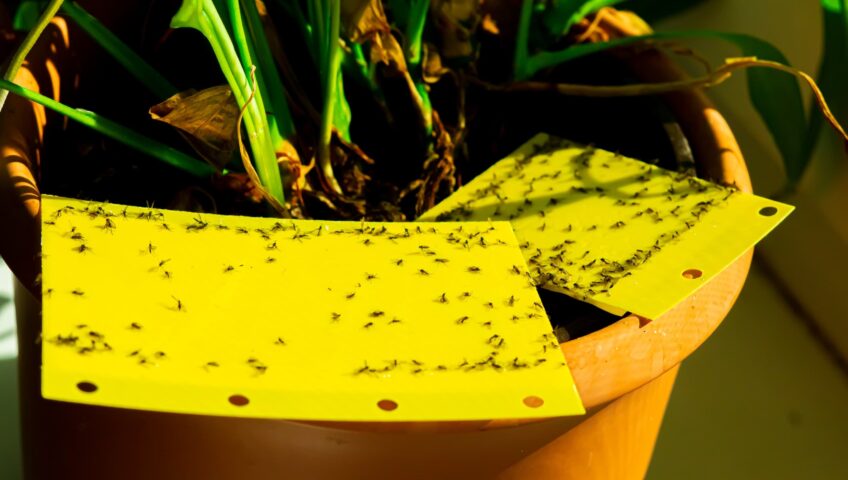
Gnats always seem to thrive in warmer weather, and here in San Antonio, we know all too well that our weather is hardly anything other than warm. What starts as one or two gnats one day may turn into a dozen the next.
Out of all the household pests, gnats are one of the hardest to get rid of. No matter how many you crush or catch, they never seem to stay gone! Luckily, Apple Pest Control is here to help keep your home gnat-free.
Understanding Gnats
Understanding gnats can help you determine the best way to get rid of them. A gnat’s lifespan is typically ten days, and while this is relatively short, it’s enough time for adult female gnats to lay up to 300 eggs. This is why gnats seem to multiply so quickly in your home.
- Gnats are primarily attracted to sweet and fruity scents, but can also be drawn to other sources such as:
- Sources of standing water or moisture (open drinks, spills, sink drains)
- Body heat
- Flowers and other house plants
- Produce, especially if it’s overripe or rotting
- Garbage cans
Setting Natural Traps
While there are many kinds of sticky traps and chemical sprays available at your local grocery store, they can look unappealing in your home or negatively impact your air quality. You can make your own inexpensive and all-natural gnat traps at home using household items.
Using apple cider vinegar is a popular option. Combining a few tablespoons of apple cider vinegar, a little bit of dish soap and a tablespoon of sugar in a small bowl will draw gnats in and cause them to drown.
Alternatively, if you have some leftover red wine in your fridge, you can mix it with some dish soap to create a trap. The fruit smell and sweetness of red wine act as an effective substitute for vinegar and sugar.
Mixing Your Own Gnat Spray
Sprays can be used to treat small areas affected by minor gnat problems. Mixing a tablespoon of vinegar with a few drops of dish soap in a spray bottle should be enough to take care of it.
If the gnats hover around your house plants, use a mixture of warm water and dish soap instead. After two hours, spray again with plain water to rinse off the soap residue. Allow the soil to dry out before you continue watering the plant or repot the plant in fresh soil to get rid of the remaining gnat eggs and larvae.
Treating Your Drains
Gnats typically lay their eggs in moist places near organic material such as food remnants. This can make your kitchen sink drain the ideal breeding ground. Treating your drain will help prevent those eggs from hatching and make your gnat infestation worse! One way to treat your drain is to pour a cup of diluted bleach down the drain.
If bleach doesn’t work or you prefer a chemical-free option, you can use a different method. Start by pouring half a cup of salt and half a cup of baking soda down the drain, followed by one cup of vinegar. Once the mixture has foamed and remained in the drain for two hours, rinse the sink and drain with hot water.
Get Rid Of Gnats For Good
Knowing what’s attracting gnats in your home is an important part of ensuring they stay gone after you’ve removed them. This will help you identify the best preventative measures that will keep your home gnat-free. Some things you can do to keep gnats out of your home are:
- Seal any openings around windows and exterior doors that could let gnats in
- Repair any leaky plumbing and keep the area dry
- Periodically scrub your sink drains with a long-handled brush
- Clean any food or drink spills as soon as they happen
- If you have pets, avoid leaving their food and water out overnight
Call Your San Antonio Pest Control Experts!
Sometimes a gnat infestation can become too much to handle with home remedies. When vinegar traps can’t catch them all, it may be time to call in a pest control pro. Contact Apple Pest Control today to see how we can help with your gnat removal needs!




